Oxcarbazepine is a second‑generation antiepileptic drug (AED) that stabilises neuronal membranes by blocking voltage‑gated sodium channels. It’s widely prescribed for focal seizures and, increasingly, for bipolar disorder. While its seizure‑control benefits are clear, patients and clinicians often wonder if oxcarbazepine bone health link exists.
Why Bone Health Matters for People on AEDs
Bone health refers to the strength and structural integrity of the skeletal system, usually measured by bone mineral density (BMD) and fracture incidence. Chronic AED use has been associated with reduced BMD in several cohorts, leading to a higher prevalence of osteoporosis - a condition where bone porosity increases, making fractures more likely.
How Oxcarbazepine Might Influence Bone Metabolism
Oxcarbazepine is metabolised primarily to its active monohydroxy metabolite. This process triggers enzyme induction, especially of cytochrome P450 isoenzymes. Enzyme induction can accelerate the catabolism of vitamin D, lowering its serum levels. Vitamin D is crucial for calcium absorption in the gut; a deficit leads to secondary hyperparathyroidism, where parathyroid hormone (PTH) leaches calcium from bone to maintain blood levels.
In parallel, some studies suggest oxcarbazepine may alter calcium handling directly at the renal tubules, increasing urinary calcium loss. When calcium loss outpaces intake, the bone remodeling balance tips toward resorption, gradually eroding BMD.
Clinical Evidence: What the Numbers Say
Large‑scale observational studies from Scandinavia and the United States have compared BMD in patients on oxcarbazepine versus those on newer AEDs with less hepatic impact such as levetiracetam. The average lumbar spine T‑score for oxcarbazepine users was -1.4, compared with -0.8 for levetiracetam, indicating a modest but statistically significant reduction.
Meta‑analyses published in 2022 pooled data from six prospective cohorts (total n≈2,300). They reported a 15% increased odds of osteopenia and a 9% rise in documented fractures among long‑term oxcarbazepine users. Importantly, the risk was most pronounced in patients over 50, post‑menopausal women, and those with low baseline calcium intake.
Who Is Most at Risk?
- Adults >45years, especially post‑menopausal women.
- Patients with pre‑existing low vitamin D levels.
- Individuals on concurrent enzyme‑inducing AEDs such as phenytoin or carbamazepine.
- Those with chronic kidney disease, which already impairs calcium homeostasis.
Monitoring Bone Health While on Oxcarbazepine
Guidelines from the International League Against Epilepsy (ILAE) recommend a baseline dual‑energy X‑ray absorptiometry (DXA) scan before starting an enzyme‑inducing AED. Follow‑up DXA should be repeated every 2-3years, or sooner if a patient experiences a low‑impact fracture.
Laboratory monitoring includes serum calcium, phosphate, 25‑hydroxy‑vitaminD, and PTH every 12months. Trends in these markers help clinicians decide when to intervene with supplementation or medication adjustment.

Practical Steps to Protect Your Bones
- Calcium intake: Aim for 1,000mg/day (1,200mg for women>50). Dairy, fortified plant milks, and leafy greens are reliable sources.
- VitaminD supplementation: 800-1,000IU daily for most adults; higher doses (2,000IU) may be needed if serum 25‑OH‑D <20ng/mL.
- Weight‑bearing exercise: Walking, jogging, or resistance training 3times a week stimulates bone formation.
- Limit alcohol and tobacco: Both accelerate bone loss.
- Medication review: If BMD declines, discuss switching to a non‑inducing AED like levetiracetam, or adding bisphosphonate therapy under specialist guidance.
Comparison of Oxcarbazepine with Other AEDs Regarding Bone Health
| Drug | Enzyme Induction | VitaminD Effect | Typical BMD Change (2yr) |
|---|---|---|---|
| Oxcarbazepine | Moderate | ↓~10% | −0.5T‑score |
| Carbamazepine | Strong | ↓~15% | −0.8T‑score |
| Phenytoin | Strong | ↓~20% | −1.0T‑score |
| Levetiracetam | None | No significant change | ±0.0T‑score |
| Valproic Acid | None | Variable, slight ↑ risk | −0.2T‑score |
Related Concepts and Next Steps in the Knowledge Cluster
Understanding oxcarbazepine’s bone effects fits within a broader medication‑induced osteoporosis cluster. Adjacent topics include:
- Drug‑induced renal phosphate wasting - another pathway to weakened bone.
- Hormonal changes in epilepsy - chronic seizures can alter cortisol and sex hormones, indirectly affecting bone turnover.
- Nutritional supplementation in chronic disease - guidelines on calcium, vitaminD, magnesium, and vitaminK2.
Readers who want to dive deeper might explore “Antiepileptic Drugs and Fracture Risk” or “Managing Osteoporosis in Young Adults on Long‑Term Therapy.” These sub‑topics expand the conversation from a single drug to the whole therapeutic landscape.
Bottom Line
Oxcarbazepine can modestly affect bone health through enzyme induction and altered calcium‑vitaminD balance. The effect is most noticeable in older adults, those with low baseline nutrients, or patients on multiple inducing agents. Regular monitoring, adequate calcium and vitaminD intake, and lifestyle measures can blunt the risk. When BMD declines despite these steps, clinicians should discuss alternative AEDs or bone‑protective medications.
Frequently Asked Questions
Can oxcarbazepine cause osteoporosis?
Oxcarbazepine is not a direct cause of osteoporosis, but its enzyme‑inducing properties can lower vitaminD levels and increase calcium loss, which over time may contribute to bone thinning. The risk is modest compared with stronger inducers like phenytoin, yet it becomes clinically relevant in high‑risk groups such as post‑menopausal women.
How often should I get a bone density scan while on oxcarbazepine?
Guidelines suggest a baseline DXA before starting therapy, followed by repeat scans every 2-3years. If you have additional risk factors-age>50, low vitaminD, or a previous fracture-checking annually is prudent.
Do I need to stop oxcarbazepine if my bone density declines?
Not necessarily. First‑line steps include correcting vitaminD, upping calcium intake, and adding weight‑bearing exercise. If BMD continues to drop, your neurologist may consider switching to a non‑inducing AED or adding a bisphosphonate under a bone specialist’s care.
Is vitaminD supplementation enough to counteract the drug’s effect?
Supplementation helps, especially when serum 25‑OH‑vitaminD is below 30ng/mL. However, it should be part of a broader strategy that also addresses calcium, lifestyle, and regular monitoring, because enzyme induction can still cause urinary calcium loss.
Are there any newer AEDs that are safer for bone health?
Levetiracetam and pregabalin have little to no enzyme‑inducing activity, making them the preferred choices for patients with existing osteoporosis or high fracture risk. Always discuss seizure control efficacy before switching.
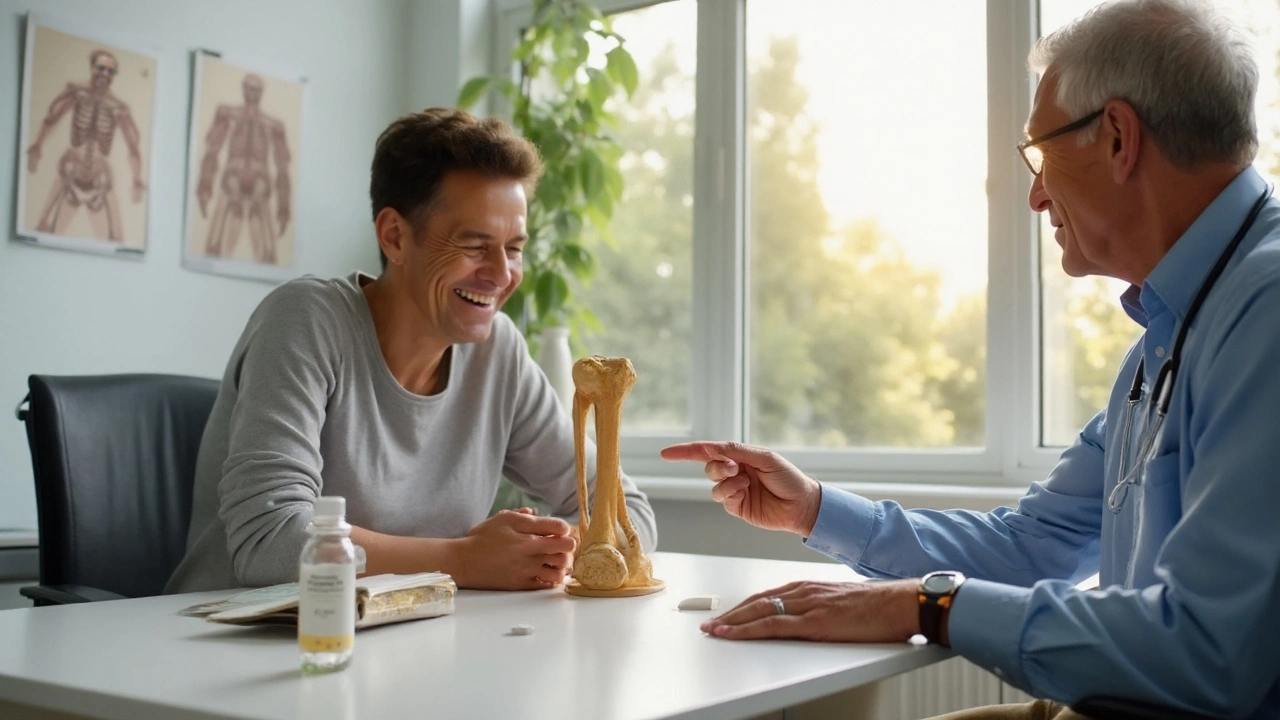
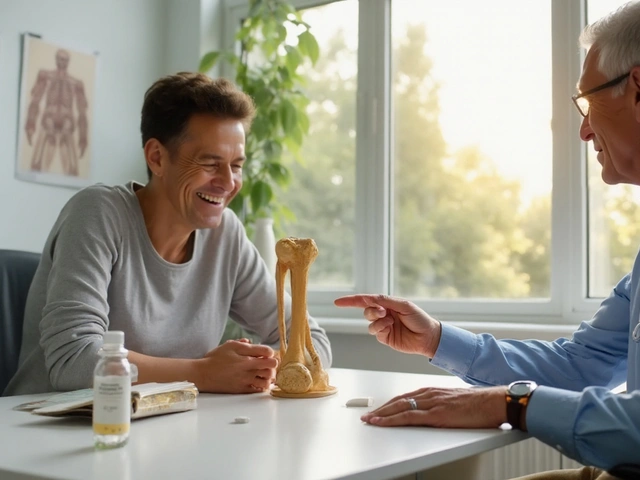


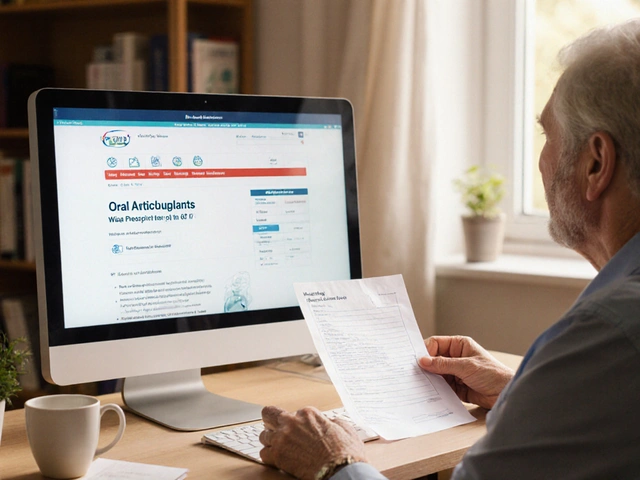
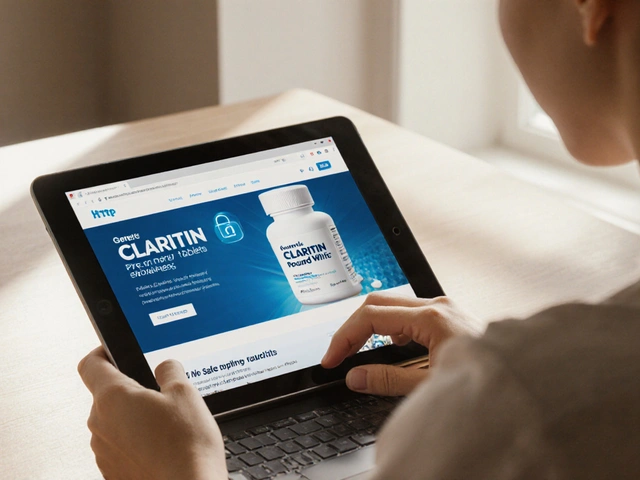
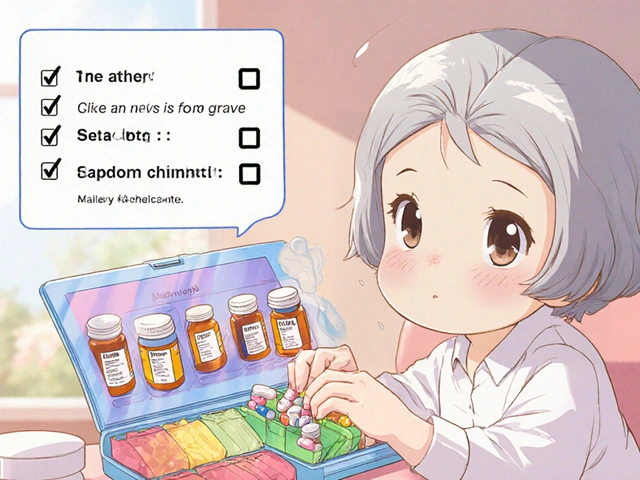
Brittaney Phelps
September 21, 2025 AT 22:15Great overview-if you’re on oxcarbazepine, keep an eye on your vitamin D and stay active!
Kerri Burden
September 27, 2025 AT 06:02The pharmacokinetic profile of oxcarbazepine underscores its CYP450-inducing capacity, which cascades into perturbed 25‑hydroxy‑vitamin D catabolism and subsequent secondary hyperparathyroidism.
Joanne Clark
October 2, 2025 AT 13:48Oxcarbazepine, while efficacious for focal seizures, carries a subtle but clinically relevant impact on skeletal integrity. The enzyme induction it provokes accelerates the degradation of 25‑hydroxy‑vitamin D, diminishing intestinal calcium absorption. Consequently, patients may develop compensatory secondary hyperparathyroidism, which siphons calcium from bone reservoirs. Moreover, renal calcium wasting has been documented, compounding the net negative calcium balance. Epidemiologic cohorts from Scandinavia reveal lumbar spine T‑scores averaging –1.4 in long‑term users versus –0.8 in controls. Meta‑analytic data suggest a 15 % uptick in osteopenia odds and a near‑10 % rise in fracture incidence among this population. The risk curve steepens dramatically after the fifth decade of life, especially in post‑menopausal women with baseline low vitamin D. Patients concurrently taking other enzyme‑inducing AEDs, such as phenytoin, face an additive threat to bone density. Chronic kidney disease synergizes with these mechanisms by impairing vitamin D activation and calcium reabsorption. Clinical guidelines now advocate baseline DXA scanning prior to initiating oxcarbazepine, with follow‑ups every two to three years. Laboratory surveillance-including serum calcium, phosphate, 25‑OH‑vitamin D, and PTH-should be instituted annually. Prophylactic calcium intake of 1,000 mg daily (1,200 mg for women over 50) remains a cornerstone of management. Vitamin D supplementation at 800–1,000 IU per day is generally sufficient, though higher doses may definatly warranted for deficient individuals. Weight‑bearing exercise, such as brisk walking or resistance training, further mitigates bone loss. Ultimately, a multidisciplinary approach involving neurology, endocrinology, and nutrition can preserve skeletal health without abandoning seizure control.
George Kata
October 7, 2025 AT 21:35Thanks for the deep dive, Joanne. A few practical points: ensuring 25‑OH‑vitamin D stays above 30 ng/mL can blunt the PTH surge, and checking urinary calcium can catch tubular losses early. Also, consider adding a calcium carbonate supplement if dietary intake is low-it's cheap and effective. Lastly, if DXA shows a rapid decline, a bisphosphonate trial under a bone specialist is reasonable. Hope that helps!
Nick Moore
October 13, 2025 AT 05:22Nice summary! If you’re on oxcarbazepine, think of bone health as a team sport-diet, sunshine, and movement all score points.
Jeffery Reynolds
October 18, 2025 AT 13:08While your enthusiasm is appreciated, the phrase “think of bone health as a team sport” is colloquial and could be misinterpreted. A more precise recommendation would be: maintain serum 25‑hydroxy‑vitamin D ≥ 30 ng/mL, calcium intake ≥ 1 g/day, and schedule DXA scans biennially.
Mitali Haldankar
October 23, 2025 AT 20:55Sure, but maybe the bone loss isn’t that scary 😂
snigdha rani
October 29, 2025 AT 03:42Honestly, Mitali, the data suggest otherwise. Even a modest decrease in BMD raises fracture risk, especially in older adults. Keeping calcium and vitamin D on point is not optional.
Mike Privert
November 3, 2025 AT 11:28Every little bit helps-track your labs, stay active, and talk to your doc about any worries.
Chris Faber
November 8, 2025 AT 19:15yeah man just get some sunshine and hit the gym you’ll be fine
aura green
November 14, 2025 AT 03:02Reading this felt like a masterclass in how a seizure medication can moonlight as a bone‑wrecker, didn’t it? 😊
First, the article nicely outlines the enzyme‑inducing cascade that turns vitamin D into a fleeting ghost.
Then it drags us through the labyrinth of calcium homeostasis with all the charm of a tax form.
I especially love the statistic that a 15 % rise in osteopenia translates to a handful of extra fractures.
Of course, the recommended calcium intake of 1,000 mg is just a suggestion if you enjoy breaking bones.
And let’s not forget the fabulous suggestion to get a DXA scan every two to three years-because who doesn’t love extra appointments?
The piece also wisely notes that weight‑bearing exercise can help, as if jogging on a treadmill isn’t already a pain.
All in all, if you’re on oxcarbazepine, just remember you’re basically living on the edge of a bone‑related cliff. 🙃
Stay safe, stay supple, and maybe keep a vitamin D bottle handy.
Edward Morrow
November 19, 2025 AT 10:48Listen, aura, this isn’t a comedy roast; it’s a real clinical concern. Dismissing bone health with sarcasm does patients a disservice, especially when the numbers are clear. Get serious or get out of the discussion.
Shayne Tremblay
November 24, 2025 AT 18:35Let’s keep the momentum going-knowledge is power, and strong bones are a win for everybody!
Stephen Richter
November 30, 2025 AT 02:22In light of the presented evidence, it is advisable to incorporate routine bone density assessments and appropriate supplementation into the management plan of patients receiving oxcarbazepine
Musa Bwanali
December 5, 2025 AT 10:08Exactly, Shayne. Adding a multidisciplinary perspective ensures we don’t overlook any modifiable risk factor.
Allison Sprague
December 10, 2025 AT 17:55Frankly, the article cherry‑picks data to sensationalize a modest risk; most patients on oxcarbazepine never develop clinically significant osteoporosis, so the alarmist tone feels overblown.
leo calzoni
December 16, 2025 AT 01:42Allison, your dismissal is naïve. The literature is unequivocal-enzyme induction wreaks havoc on calcium balance, and ignoring it invites preventable fractures.